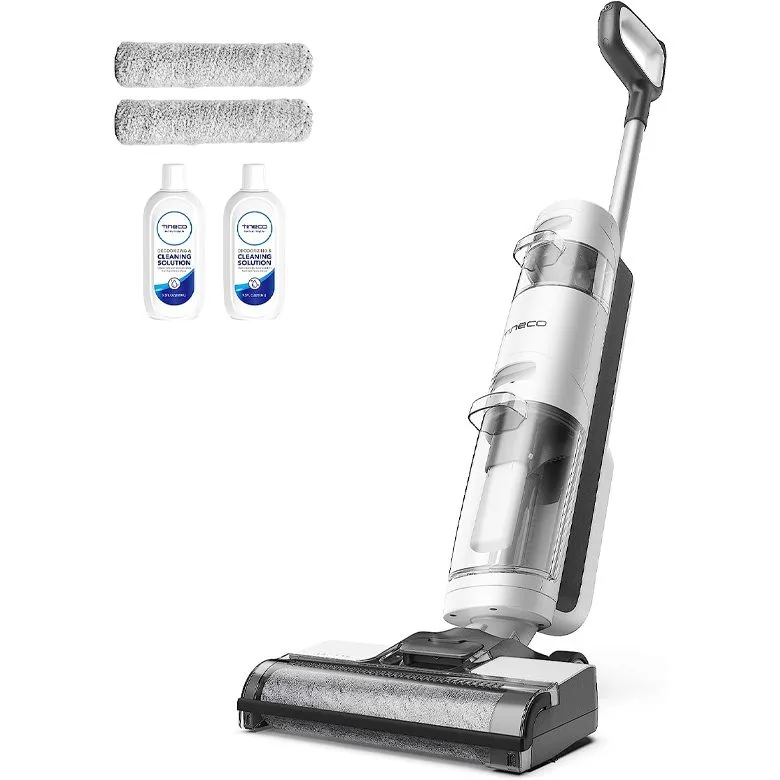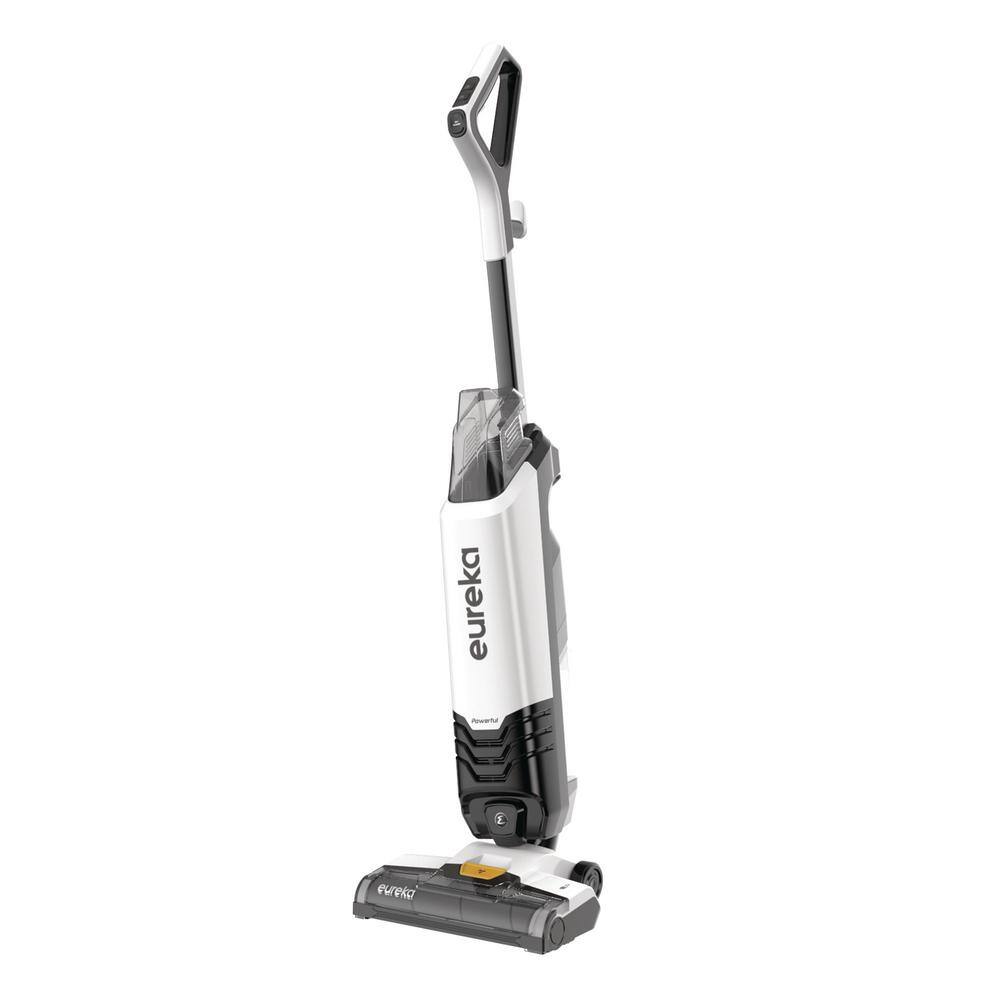The Benefits of Using Wet Vacuum Cleaners for Mopping
How to use wet vacuum cleaner for mopping? Embracing the use of a wet vacuum cleaner for mopping brings a host of advantages. These devices efficiently manage both vacuuming and mopping tasks, often in one fell swoop. Here’s how a wet vacuum cleaner can enhance your cleaning routine:

- Time-saving and Convenient: Wet vacuum cleaners streamline the cleaning process. Users save time by tackling two tasks with a single device.
- Enhanced Cleaning Efficiency: These cleaners are designed to remove tough dirt and stains. They provide a deeper clean than traditional mopping can usually achieve.
- Reduced Physical Effort: With a wet vacuum cleaner, heavy scrubbing becomes unnecessary. The device does the hard work, reducing strain and fatigue.
- Improved Hygiene: Wet vacuum cleaners can often heat water, killing more germs and bacteria than a regular mop. This leads to a more sanitary living environment.
- No Need to Handle Dirty Water: The device sucks up the dirty water. Users avoid the unpleasant task of wringing out mops and dealing with murky water.
- Better Air Quality: Wet vacuum cleaners can also help improve air quality. They trap dust and allergens in water, preventing them from becoming airborne again.
- Versatility: They are also well-suited to a variety of floor types. This makes them versatile helpers in maintaining different types of flooring.
By investing in a wet vacuum cleaner, homeowners and commercial users alike enjoy these benefits. They make keeping floors pristine simpler, more effective, and less time-consuming. Using a wet vacuum cleaner for mopping not only elevates the cleanliness of your space but does so with remarkable ease and efficiency.
Essential Features to Look for in a Wet Vacuum Cleaner
When scouting for the perfect wet vacuum cleaner, certain features stand out as must-haves. These key characteristics define the functionality and user experience of the device. Here’s what to pay attention to:
- Powerful Suction: A strong motor ensures effective dirt and liquid pickup. Look for high wattage for the best performance.
- Water Filtration System: The system traps dirt and allergens. Opt for models with efficient water filtration to enhance air quality.
- Tank Capacity: A larger tank minimizes the need for frequent emptying. This makes your cleaning sessions more efficient.
- Ease of Use: Consider weight, maneuverability, and controls. These factors contribute to comfortable operation when mopping.
- Drying Capability: Some models offer a drying feature. This helps speed up the floor drying process after wet vacuuming.
- Attachments and Accessories: Pay attention to brushes and nozzles. They make the cleaner versatile across different floor types and spaces.
- Maintenance Features: Easy-to-clean parts are crucial. Quick access to filters and tanks is beneficial for upkeep.
Choose a wet vacuum cleaner that ticks all these boxes to ensure a hassle-free cleaning experience. High-powered suction, water filtration, and multiple functionalities can make a world of difference in how to use the wet vacuum cleaner for mopping and maintaining spotless floors.
Step-by-Step Instructions on Using a Wet Vacuum Cleaner
Getting the most out of your wet vacuum cleaner requires knowing the right steps to take. Follow this clear and concise guide on how to use a wet vacuum cleaner for mopping your floors to ensure you achieve the best results.
- Prepare the Area: Start by removing furniture, rugs, and any other items from the floor. This gives you unobstructed access to the entire surface.
- Fill the Tank: Check your cleaner’s guide. Fill the water tank with clean water—and cleaning solution, if needed.
- Power Up: Plug in your vacuum cleaner. Make sure the cord allows movement across your cleaning area.
- Start Cleaning: Turn the machine on. Begin at the corner farthest from the door. Move in straight, overlapping lines.
- Change Water as Needed: Dirty water should be replaced with fresh water. Repeat this as often as necessary while cleaning.
- Focus on Tough Spots: Use any attachments for stubborn stains. Linger a little longer on these areas for deep cleaning.
- Dry the Floor: If your model has drying capabilities, activate them. Alternatively, let the floor air dry, avoiding foot traffic.
- Empty the Tank: After cleaning, always empty out the dirty water. This prevents odors and maintains hygiene.
- Clean the Vacuum: Wipe the machine down. Clean or replace filters as directed to keep your equipment in top shape.
By following these steps on how to use a wet vacuum cleaner for mopping, you’ll ensure a deep clean and extend the life of your device. Remember to refer to your specific model’s manual for any additional instructions or recommendations.
Wet Vacuum Cleaner Maintenance and Care Tips
To keep your wet vacuum cleaner in top working condition, follow these maintenance and care tips. Regular upkeep not only extends the life of the device but also ensures optimal performance.
- Empty and Clean Tanks Regularly: After each use, empty the dirty water tank. Rinse it out to prevent odors and residue buildup.
- Check and Clean Filters: Inspect filters after usage. Clean or replace them according to the manufacturer’s guidelines.
- Wipe Down the Machine: Use a damp cloth to clean the exterior of the vacuum. This prevents dust and dirt from accumulating.
- Inspect and Clean Brushes: Remove debris that may get tangled in the brushes. Clean them to maintain effective suction and scrubbing action.
- Store Properly: Keep your wet vacuum cleaner in a dry, cool place. Ensure it’s upright to avoid water leaking into unwanted areas.
- Regular Safety Checks: Look over the power cord and plugs for any damage. Address any issues to prevent electrical hazards.
- Mind the Power Source: Always plug your wet vacuum cleaner into a grounded outlet. Use of an extension cord is not recommended.
By implementing these simple yet effective tips on how to use a wet vacuum cleaner for mopping, you’ll not only safeguard your investment but also enjoy a cleaner home with less effort.

Comparing Wet Vacuum Cleaner Brands and Models
When shopping for a wet vacuum cleaner, comparing different brands and models is crucial. The market offers a variety of options, each with unique benefits and features. To help narrow down your choices, consider these points:
- Performance: Look for cleaners with strong suction and reliable water removal. Check reviews for performance data.
- Design: Some models are compact and user-friendly, while others might be bulkier. Choose a design that suits your space and storage needs.
- Price: Wet vacuum cleaners vary in price. Set a budget and find the best option within your range. Remember, high price doesn’t always mean better quality.
- Reputation: Well-known brands often offer better customer service and warranties. However, don’t overlook new brands with positive feedback.
- Technology: Advanced models may feature smart technology, such as automatic detergent mixing. Decide if these extra features are worth the investment for you.
- Noise Level: If a quiet environment is important, seek out low-noise models. This can be especially relevant in noise-sensitive areas.
By focusing on these factors when comparing wet vacuum cleaner brands and models, you can make an informed decision. This ensures you get a cleaner that meets your needs for how to use a wet vacuum cleaner for mopping effectively.
Troubleshooting Common Issues with Wet Vacuum Cleaners
Despite their convenience and effectiveness, wet vacuum cleaners can sometimes encounter problems. Knowing how to troubleshoot common issues can save time and prevent frustration during your cleaning routine. Here are solutions to some typical problems you might face when learning how to use a wet vacuum cleaner for mopping:
- Loss of Suction Power: Ensure the filters are clean and not clogged. Check for blockages in the nozzle or hose.
- Leaving Streaks on Floor: Make sure the cleaning pads are not overly dirty. Replace or clean them as necessary.
- Machine Not Dispensing Water: Verify that the water tank has enough liquid and the pump is functioning properly.
- Unusual Noises: Address any strange sounds by checking for debris in the brushes or motor area. Tighten any loose parts.
- Not Picking Up Water Efficiently: Inspect the squeegee and ensure it’s not damaged or worn out. Adjust it for proper floor contact.
- Battery Issues in Cordless Models: Keep batteries charged. Replace them if they don’t hold a charge as they used to.
By tackling these issues, you’ll keep your wet vacuum cleaner running smoothly. Remember to consult your device’s manual for brand-specific guidance.

Wet Vacuuming vs. Traditional Mopping: A Comparative Analysis
When choosing a cleaning method, it’s important to weigh the pros and cons of wet vacuuming versus traditional mopping. Let’s delve into a comparative analysis of these two approaches to floor cleaning.
- Efficiency: Wet vacuum cleaners offer more efficiency than traditional mops. They combine suction and mopping, reducing cleaning time.
- Physical Effort: Traditional mopping often requires vigorous scrubbing. With wet vacuum cleaners, the machine does the hard work, making cleaning easier.
- Water Usage: Wet vacuums use water more effectively. They avoid frequent water changes that mopping requires.
- Cleanliness: Wet vacuums are able to suction up the dirty water. This can result in cleaner floors as compared to mops that might spread dirty water.
- Hygiene: Heat features in wet vacuums can kill more germs. Traditional mops might not remove as many bacteria.
- Drying Time: Many wet vacuums have a drying feature. With mopping, you may wait longer for floors to dry.
- Accessibility: Wet vacuums can reach tight spaces with their attachments. Mops may not clean corners and edges as effectively.
- Maintenance: Wet vacuums require regular cleaning of filters and tanks. Mops are simpler to maintain but might not be as effective overall.
- Cost: Initially, wet vacuum cleaners can be more expensive. However, they might save money over time through efficiency and durability.
- Safety: Without the need to handle buckets of water, wet vacuums reduce slipping hazards. Mops can leave floors wetter, which can be risky.
Considering these factors can help you make an informed decision about how to use a wet vacuum cleaner for mopping versus sticking to traditional methods. For modern households and businesses seeking effective and convenient cleaning solutions, wet vacuum cleaners are often the superior choice.
Tips for Maximizing the Efficiency of Your Wet Vacuum Cleaner
To get the most out of your wet vacuum cleaner, follow these practical tips:
- Pre-Cleaning Sweep: Quickly sweep or dry vacuum the area before using your wet vacuum. This removes surface debris and enhances the vacuum’s mopping efficiency.
- Regularly Replace Water: Change the water often to avoid spreading dirt. Clean water means a cleaner floor.
- Correct Cleaning Solution: Use the right detergent for your flooring type. Check the manual for recommended solutions.
- Proper Maintenance: Keep your vacuum in check. Regularly service it to prevent performance issues.
- Appropriate Settings: Use the correct settings for your floor type. Too much water on delicate floors can cause damage.
- Even Pacing: Move the vacuum consistently. Don’t rush. Slow and steady wins the race.
- Optimized Attachments: Select proper brushes and nozzles. These tailor the clean to specific floor needs.
By following the above tips on how to use a wet vacuum cleaner for mopping, you can ensure it runs at peak performance, giving you the cleanest floors possible with less effort and time.


